Motorola Defy+ Review
Motorola Defy+
One of our favourite phones of last year is back with a performance upgrade. Can this semi-rugged blower still hold its own a year on?
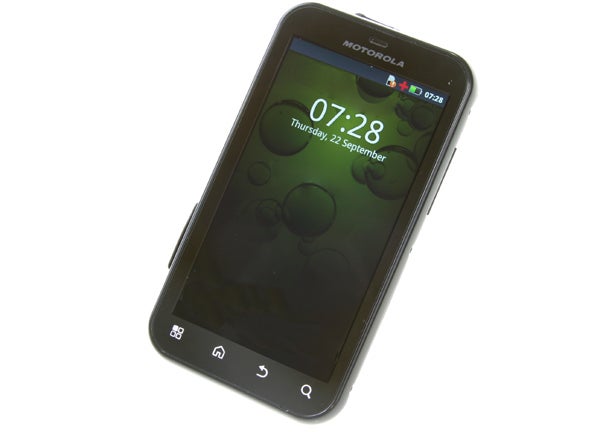
Verdict
Pros
- Waterproof housing is practical
- Tough yet styish design
- Screen is large enough for easy use
Cons
- Processor is a bit sluggish
- No button for the camera
Key Specifications
- Review Price: £213.00
- 3.7in, 480 x 854 pixel LCD display
- 1Ghz TI OMAP 3620 processor
- Android 2.3 OS
- 5 megapixel camera
In case you didn’t quite catch it earlier, this phone really is identical to its predecessor. It sports the same modest 107 x 59 x 13.4 mm dimensions, 118g weight, 3.7in Gorilla Glass screen, black plastic body and exposed torx bolt heads round the edge – you know, cause that makes it look rugged. Only the finish of the battery cover has changed, from a plain matt black plastic to a soft touch plastic, and the Motorola symbol has dropped its ‘Blur’ suffix, giving a hint as to the reduced emphasis the company is putting on its branded customisation of Android.
While none of this sounds particularly exciting, there’s definitely a sense of “if it ain’t broke, don’t fix it”. That said, while something like the Sony Ericsson Arc S can get away with being merely a faster version of its predecessor, it does so because that earlier phone only arrived six months ago. One year on and we would’ve liked to see a little more from the Defy . An AMOLED display, a larger screen, a slimmer design, a better camera; the list goes on. Nonetheless, for its £220 price, we wouldn’t expect signficicantly more, even in this day and age.
The Defy+ achieves its water and dust proof credentials by utilising rubber flaps to cover all its ports, and of course being otherwise tightly sealed from the elements. Specifically it’s rated to IP67 standard meaning it can survive being submerged in water up to a depth of one metre for 30 mins. So although it’s probably safe for taking swimming, you’ll have to be a mindful of not diving in or exploring the depths too much. More crucially it’ll survive flying from your pocket and slapping into a muddy puddle, and even being stomped on a little, so labourers or adventurous types, or just the clumsy, will be well catered for.
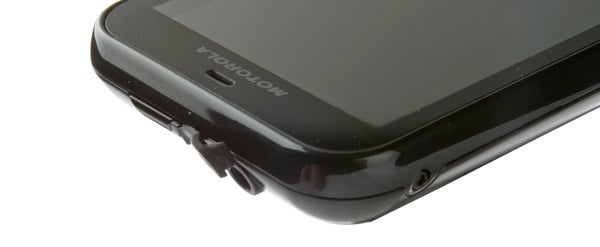
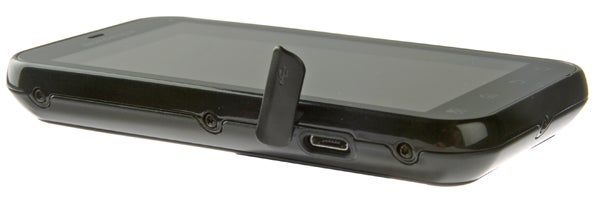
One downside of the rubber flaps is that you have to constantly remove them when you want to charge your phone or listen to music using the headphone jack. Indeed if you’re a commuter that wears headphones everyday, you may find the headphone flap fails sooner than you’d hope. What would be a really neat addition to a subsequent model would be a similar touch charging mechanism to that seen on the HTC Rhyme, thus saving you having to remove the sealing flap from the microUSB port every time you want to charge it.
Regardless, we put the phone through its watery paces and found it effortlessly coped with a bit of rough and tumble in the dirt and a wash and scrub up afterwards.
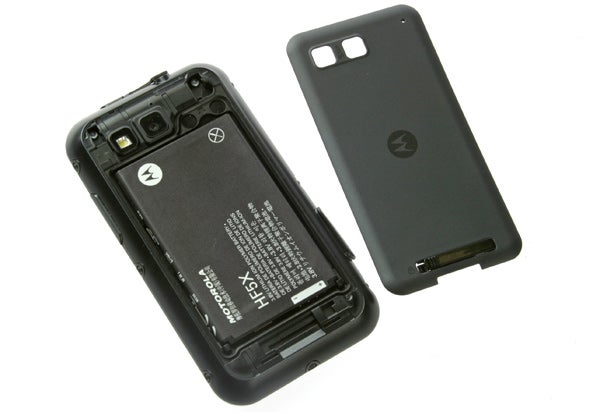
As well as the microUSB socket on the left edge and the headphone jack on the top is the power/screen lock button on the top and the volume rocker on the right edge. So you don’t get a shutter button for the 5 megapixel camera that sits on the rear. This is another lamentable omission as, if this is a phone meant for rugged pursuits, it would make operating the camera much easier with gloves on. Neither do you get an HDMI socket for connecting the phone up to a TV, though on a handset of this size and type this is fully expected.
Slide the clasp on the backplate to one side and the sealed back plate pops up to reveal a removable 1,650mAh battery. This is a large battery for such a small phone so we’ve high hopes it will keep the device going for some time. You also get a microSD slot for adding up to 32GB of extra storage, with the phone arriving with a 2GB card installed.
The Motorola Defy has a 3.7in LCD screen, with a resolution of 480 x 854 pixels. It’s nothing special, with it being a bit on the small side compared to the 4in models that are now so common, and its visually fairly unspectacular with middling viewing angles and colours and overall brightness that are somewhat muted. However, it’s perfectly adequate and certainly on par with the majority of handsets you get at this price.
What’s more, as well as being finished in tough Gorilla Glass, the actual display is noticeably recessed from the surface of the glass. While this is something that we normally dislike, as it creates noticeable internal reflections and makes the image feel less like it’s on the surface you’re touching, on a tough device it has the advantage that the screen can flex and take a knock without risk of damaging the display behind.
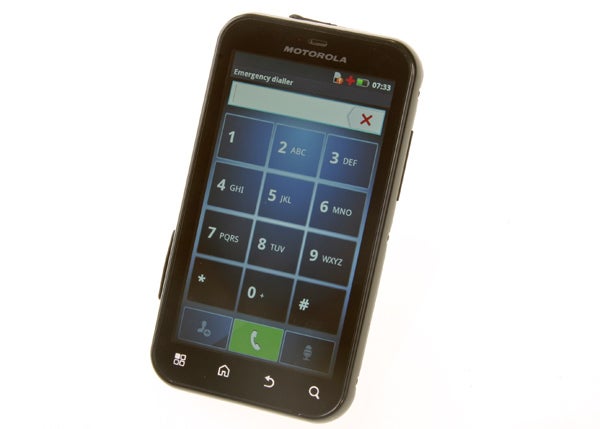
Below the screen are the four standard Android buttons, which are illuminated and touch sensitive. As ever, we’d prefer if one of these could activate the screen so a stretch to the top edge of the phone to tap the power button wasn’t required, but being as this is a smaller phone, it’s not a big issue. Otherwise the buttons are responsive and conveniently positioned.
Looking at the phone’s interface, the speed upgrade from the Defy to the Defy isn’t immediately noticeable (from what we recall of the Defy). There are perhaps fewer moments where the device stutters, and when there is a pause it’s that bit shorter, but overall it still feels noticeably slower than current high-end handsets.
The difference wouldn’t be so noticeable were the phone running a different OS, such as Windows Phone or iOS but Android (and particularly highly modified versions) tends to need a bit of performance overhead to feel sprightly and that is what this phone lacks.
What’s more the Texas Instruments OMAP 3630 chip used on this phone, in combination with the Motorola Android implementation, is actually slower than other 1GHz, Android phones, such as the HTC Rhyme.

To demonstrate this difference in performance we ran a few benchmarks; RightWare BrowserMark, Sun Spider and the 3D test from Antutu. The former two are browser-based benchmarks, so are cross platform and software dependent so give a reflection of how speedy the whole system feels, while the latter is an Android only 3D benchmark app.
SunSpider revealed just how sluggish this phone feels at times with its 6908ms time being nearly double that of the HTC Rhyme and over three times that of dual-core handsets (lower is better). BrowserMark showed the Defy in a better light, though it still trailed the Rhyme with 33192 points compared to 45024. We didn’t run Antutu when testing the HTC Rhyme but have a 1.5GHz HTC Sensation XL to hand and it scored 1190 compared to the Defy , which got 706 points. Considering the Sensation XL’s faster processor this is actually a respectable score, again demonstrating that the underlying performance is there but that the software implementation is holding back some elements of the interface.
All told, though, despite some reservations, this remains an easy to use handset that gets the job done – just don’t expect it to fly.
Despite noises from Motorola suggesting it was going to tone down its MotoBlur customisations of Android, diving into the Defy+ there are still a fair number of tweaks.
The seven homepages come packed with widgets, many of which are Motorola’s own, with their own visual style, but they do all the usual duties with no partcularly standout additions; there’s a message viewer, toggles for aeroplane mode/mute/Wi-Fi etc, a quick music player and many more. As ever we quickly rid the screen of most of these to get the most performance out of the handset, just keeping the Google search bar and settings toggles.
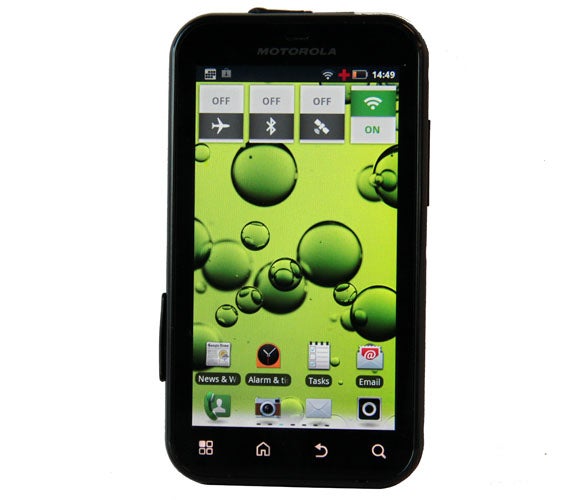
Jump into the main apps menu and thankfully Motorola hasn’t mucked about with the layout – you just get a nice alphabetical list of apps to scroll through. However, you can whittle these down to your most recently used or downloaded apps at the tap of a button.
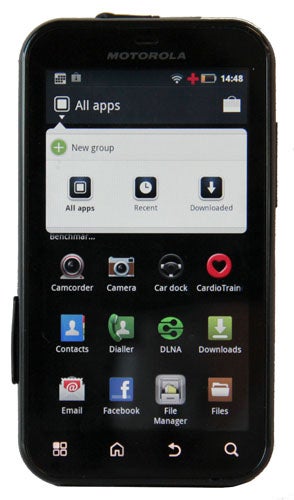
Strangely we didn’t find Twitter and Facebook preinstalled, which is something of a rarity nowadays. This is particularly odd as one of the key Motorola changes is MotoBlur, which ties in your email and social networking accounts to provide a universal inbox, a combined social network feed and a contacts list populated with information from all the above services. Until we’d got to the MarketPlace and downloaded the aforementioned apps, we couldn’t really use any of these features. Indeed it’s always something to bear in mind with Android handsets; if there’s something you don’t like about them you can more often than not find an app or software tweak that’ll put things right for you.
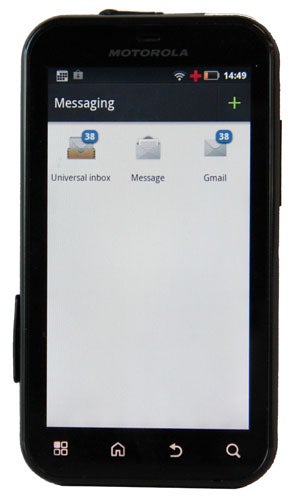
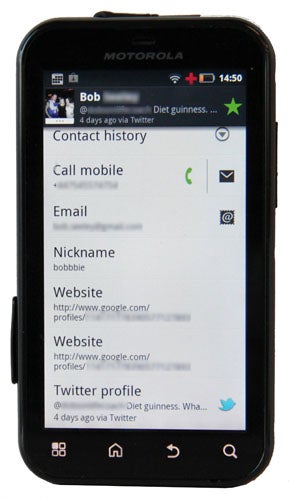
Another such example of how we had to put in a bit of work before getting the experience we wanted was the keyboard. Motorola has installed Swype – the ingenious, but acquired taste, onscreen keyboard that lets your trace out a word with one touch, rather than tapping at keys individually – as the default choice. We know some people like it but it’s hardly the defacto standard.
Overall, though, we’re talking about a typically capable Android 2.3 handset. From browsing the web to checking out what your friends are up to and playing games to finding out where you’re going, it can do the lot for you, and do it well.
So far we’ve established that the Motorola Defy+ is a competent little mid-range smartphone that packs in all the basics you’d expect of an Android device. But what about some of those nice extras? Well, unsurprisingly the Defy isn’t exactly packed to the rafters but neither does it let itself down.
Although modest in terms of specs, the 5 megapixel camera actually takes quite a nice shot, getting exposure and colouration right, even if every detail isn’t captured. The app also offers a few extras like real time effects (black and white, negative, sepia, solarise, red hint, green tint, blue tint) and scene modes (portait, landscape, sport, night portrait, sunset, macro and steady shot). However, you can’t touch anywhere onscreen to focus, which makes taking shots such as our closeup of the flower almost impossible, and there are few really clever extras like an inbuilt image tweaking tool.
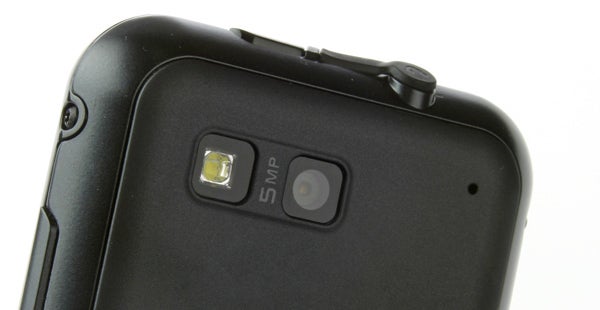
Also, video is mediocre. Again the basic quality is okay in terms of colouration and framerate but at only 640 x 480 it’s rather low res.
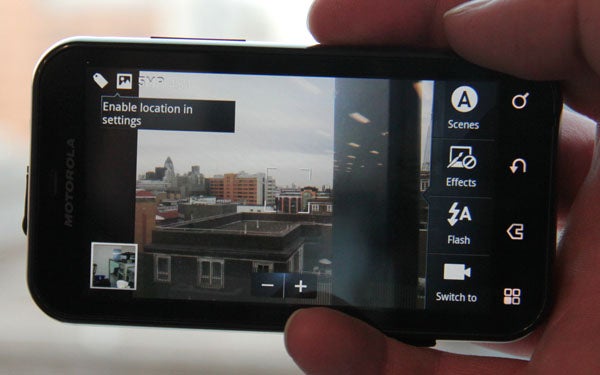
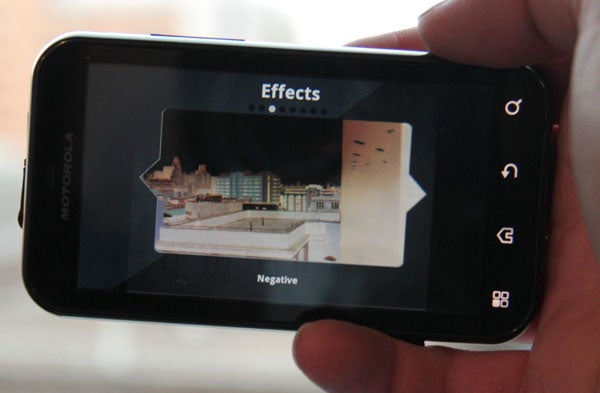
One area Motorola hasn’t skimped on for both photos and video is illumination. No, not that the phone will ornament your emails with gold lettering but that there’s an LED flash/lamp to add a bit of light to your dark shots.

Despite the gloom, the Defy has done a reasonable job of capturing this scene, though peer closer and the lack of detail is obvious.
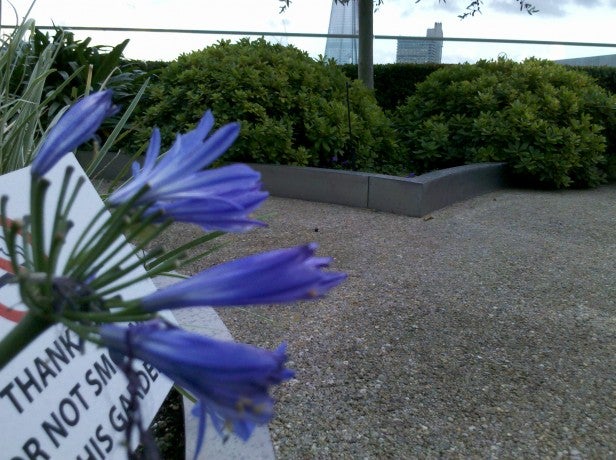
With no way to choose a focus point, closeups and shots with the subject off centre can be a bit tricky.
When it comes to playing other videos, it’s clear why that camera is limited to non HD resolutions. Anything above 640 x 480 resolution simply won’t play and even some high-bitrate videos at this resolution will be a little stuttery on occasion.
Playing a few of our choice games that sluggish performance also came through with even Angry Birds looking a bit choppy. So in case we needed any further confirmation, this phone isn’t a powerhouse that’ll storm through everything you throw at it. Instead it’s one that simply provides enough performance to ensure you can make a call, write a text, check your emails and browse the web without frustration.
When making those calls you shouldn’t find call quality is a problem either. While again this phone doesn’t offer the best going, it will provide enough clarity to get you by, though you’ll have to wait for it to dry out to get the best from it.
Considering it packs a higher than usual 1650mAh battery we were expecting a higher than average battery life, and the Defy+ does deliver. You should easily be able to get away with charging it only every other day, rather than every night like most handsets require.
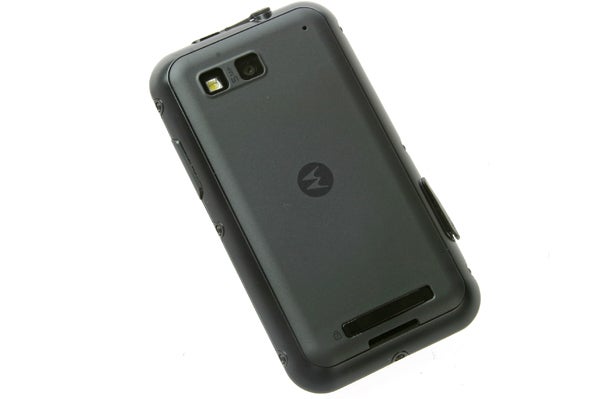
It’s this longevity combined with this phone’s ruggedness and price that really combines to make it so appealing. Retailing for just over £200, it’s eminently affordable, thus making it a potentially great choice for children or as a second phone for taking out on your more adventurous trips. Competition is minimal in this semi-rugged sector but one other model to look out for is the Sony Ericsson Xperia Active, which is a bit tougher and does sport a lanyard loop. However, it’s a much smaller handset with a more confined 3in screen.
”’Verdict”’
Those looking to upgrade their existing Motorola Defys may be disappointed with the modest enhancements made to the Defy+, indeed it’s not worth the investment, but newcomers to the waterproof smartphone market should be excited. It won’t survive the most extreme of environments but for keeping going in the UKs wet and muddy wilderness, it’s more than adequate. What’s more it offers a ”proper” smartphone experience and looks quite civil too. All that for £200 seems like a good deal to us.
How we test phones
We test every mobile phone we review thoroughly. We use industry standard tests to compare features properly and we use the phone as our main device over the review period. We’ll always tell you what we find and we never, ever, accept money to review a product.
Trusted Score
Score in detail
-
Performance 6
-
Camera 6
-
Design 8
-
Value 9
-
Features 7
General
| Operating System | Android OS |
| Height (Millimeter) | 107mm |
| Width (Millimeter) | 59mm |
| Depth (Millimeter) | 13.4mm |
| Weight (Gram) | 118g |
| Available Colours | Black |
Display
| Screen Size (inches) (Inch) | 3.7in |
| Screen Resolution | 480 x 854 |
| Touchscreen | Yes |
Battery
| Talk Time (Minute) | 430m |
| Standby Time (Hour) | 384hr |
Storage
| Internal Storage (Gigabyte) | 2GB |
| Camera (Megapixel) | 5 Megapixel |
| Front Facing Camera (Megapixel) | No Megapixel |
| Camera Flash | 1 x LED |
Connectivity
| Bluetooth | Yes |
| WiFi | Yes |
| 3G/4G | HSDPA 900 / 2100, 850 / 2100, 850 / 1900 |
| 3.5mm Headphone Jack | Yes |
| Charging/Computer Connection | microUSB |
Processor and Internal Specs
| CPU | 1GHz single-core TI OMAP 3620 |
Misc
| App Store | 300,000+ |
| GPS | Yes |

